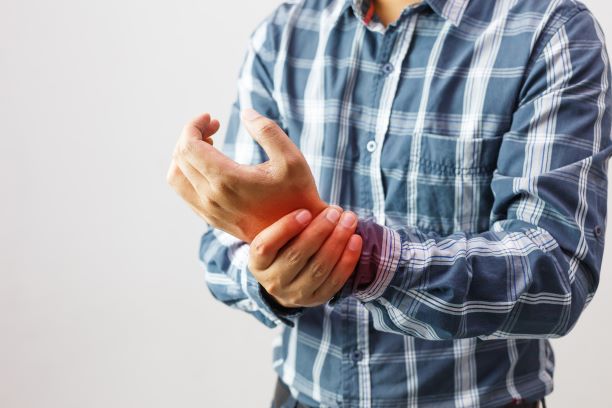How to manage arthritis
Arthritis is very common and affects more than 3.9 million adults and children in Australia. The good news is that there are a lot of things you can do to manage your arthritis. And many strategies that may help reduce pain and discomfort.
Arthritis is an umbrella term for more than 100 medical conditions that affect the musculoskeletal system, specifically joints where two or more bones meet. Arthritis is very common and affects more than 3.9 million adults and children in Australia. For those people, it can impact their everyday life, and cause varying degrees of pain and discomfort.
The good news is that there are a lot of things you can do to manage your arthritis – self management strategies that may help reduce pain and discomfort. Practicing these simple strategies may reduce symptoms and give relief. So that sufferers can pursue the lifestyle and activities that are important to them.
We look at the following five self-management strategies recommended by experts in this area:
- Be informed
- Stay active
- Manage your weight
- Talk to your doctor
- Protecting your joints.
Be informed
Being informed can assist you to be in control of your condition. It’s important to know and understand the type of arthritis you have, in order to work towards discovering the best ways to help it. Many people with arthritis say that learning about their arthritis and what they can do about it gives them back a feeling of control over their lives and their health.
It is also very important to know about your treatment options. With many treatments available to relieve pain, stiffness and slow the development process of your arthritis, it’s important that along with your doctor / healthcare team you find the right combination of treatments. Treatments will vary dependant on your type of arthritis, the joints that are affected, the amount of pain or symptoms you experience and your lifestyle.
Being informed can also include contacting your local arthritis support centre or office for information and information sessions. All of which could introduce you to the skills and changes you can make in your life, that can help lessen the impact that arthritis has on your life.
Being informed can lead to learning techniques to manage your pain. There are many techniques you can use, although you may have to try different techniques, as what can work for one person may not work for others.
Stay active
Research has found that regular exercise is one of the most effective treatments for arthritis. It is a simple and effective, non-drug method to relieve arthritis pain. Exercise can help to reduce joint pain and stiffness, improve function, relieve muscle tension and stress, increase muscle around the joints, build your flexibility, mobility and endurance, improve mood and improve the quality of life for those with arthritis. Exercise is also good for your overall health. It can help reduce your risk of developing other chronic diseases, such as heart disease and diabetes.
Not all forms of exercise are appropriate for every kind of arthritis. Therefore, you need to learn how you can exercise safely to relieve pain and manage your arthritis. It’s very important to ask your doctor / healthcare team to help you develop a suitable program that is specific to your type of arthritis, general health and lifestyle.
Some exercises that may be included in your program are, light strength training (to maintain bone mass, and help prevent future problems), walking, swimming, hydrotherapy, yoga, pilates and tai chi. All dependant on your arthritis, level of fitness and the severity of your symptoms.
There may also be local community programs that you could get involved in to help with arthritis, health and reduce arthritis symptoms.
Talk to your doctor
Talking to your doctor and healthcare team is a very important part of managing your arthritis. Your healthcare team can include any of the following: pharmacists, physiotherapists, occupational therapists, podiatrists, nurses, psychologists and complementary medicine practitioners. The best way to live well with arthritis is by working closely with all of those involved in your health and wellbeing.
As arthritis can get worse if left untreated, it’s imperative you see your doctor as early as possible. Initially you need to discuss your joint pain and other arthritis symptoms, such as joint swelling, numbness and tingling and a decrease in range of motion. An accurate diagnosis as early as possible can help with understanding your arthritis and develop a treatment plan for self-managing. Early diagnosis and treatment can also work to minimise symptoms and prevent the disease from getting worse and help you stay active and independent.
The focus of arthritis treatment is to reduce pain, minimise joint damage and improve or maintain function and quality of life.
Attending regular appointments with your health care team and following your treatment plan is very important. This is especially important if you also have other health conditions.
It is also important to remember the emotional side of arthritis. It is normal to feel frustrated, angry, scared and even depressed about having arthritis. It’s important to acknowledge those feelings and reach out and get help from those that can help. Including to your family and friends, doctors, counsellors or psychologists.
Manage your weight
Maintaining a healthy body weight is very important for everyone. However, for those with arthritis it can help lower the stress on your joints, reduce pain and increase your mobility. Extra body weight increases the stress on many joints, particularly the weight bearing joints like knees, hips and lower back.
People who are overweight or obese are at a greater risk of developing arthritis, osteoporosis and other chronic diseases. Even losing as little as 4-6kgs can improve pain and function for those with arthritis.
A healthy diet is a very big part of managing your weight. The best thing you can do to promote good health is to adopt balanced, nutritious eating habits. A healthy diet made up of plenty of fruits and vegetables and a good variety of nutrients can help you to maintain a healthy weight and reduce your risk of other health problems. Increasing your intake of calcium and vitamin D may also help in the prevention of arthritis and osteoporosis.
It is important to note that there are many myths about food and arthritis. However, no diet has been proven, by research, to cure arthritis and there is very little scientific evidence that specific foods have an effect on arthritis.
Protect your joints
There is a lot of things that you can do to protect your joints, as injuries to your joints can lead to or worsen arthritis:
- Choose gentle activities that are easy on your joints. These could be walking, swimming and bicycling. Low-impact activities have a lower risk of injury and do not put too much stress on your joints. It’s always important to check with your doctor/health care team before starting a new activity.
- Eating certain types of omega-3 fats can reduce inflammation from arthritis. This may help to relieve joint pain and stiffness in a similar way to non-steroidal anti-inflammatory drugs. Arthritis Australia suggests trying to eat oily fish such as sardines and salmon at least two to three times a week. Other foods rich in omega-3 fats include walnuts, canola oil, flaxseed oil, ground linseeds and eggs.
- Reducing alcohol and tobacco is very important for your joints. Too much alcohol has a negative impact on bone mass and can contribute to weight gain, which overall puts more pressure on the joints. Excessive alcohol intake is also a contributing factor to many other chronic diseases. Studies also show that smoking tobacco increases the risk of developing rheumatoid arthritis, as well as low bone mass and low bone strength.
- Massage can be an effective way to alleviate muscle tension and stiffness caused by arthritis. Remedial/therapeutic massage therapy can assist in improving circulation, reducing swelling and increase the body’s production of its natural pain-killer – endorphins. Relaxation is also helpful for improving sleep and immune function and reducing arthritis related fatigue.
- Applying heat and cold to your arthritis affected areas may help. Heat relaxes your muscles and stimulates blood circulation, so a warm bath or a heat pack on affected areas for 15 minutes may be soothing. Cold packs can be used to provide relief, numb affected areas (joints that are feeling hot and swollen) and reduce swelling. Also apply ice packs for 15 minutes for relief. Ask your doctor or physiotherapist whether heat or cold is best for you.
- Wearing protective equipment and avoiding repetitive motions in sports and workplaces can help minimise or prevent injuries to joints. As joint injuries, often done in sport or at work can increase the likelihood of developing osteoarthritis.
Learning to balance your life when you have arthritis is very important. You need to find the balance between work, activity and rest, learn to pace yourself, learn to make the most of your energy and learn about the equipment and support that is available to make daily life easier.
For more information, visit Arthritis Australia arthritisaustralia.com.au
And their booklet 10 steps for living well with arthritis.
References:
5 Proven Ways to Manage Arthritis | CDC
10 steps for living well with arthritis — Arthritis Australia
How to manage arthritis | Live Better (medibank.com.au)











